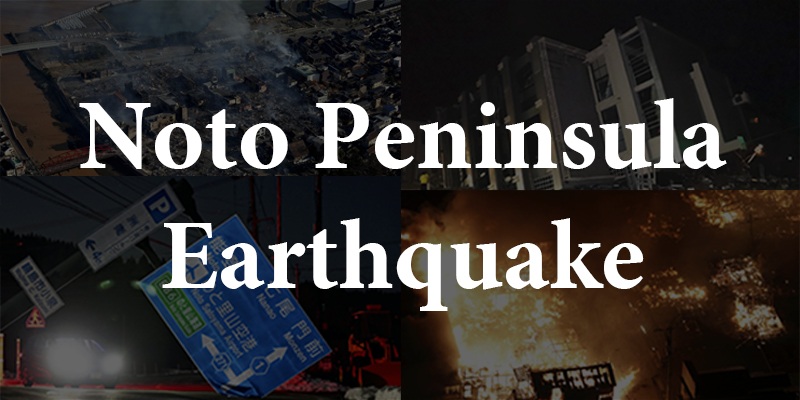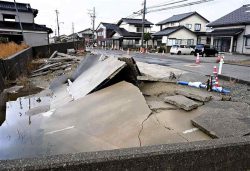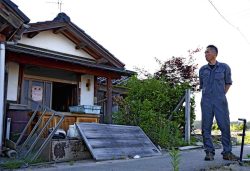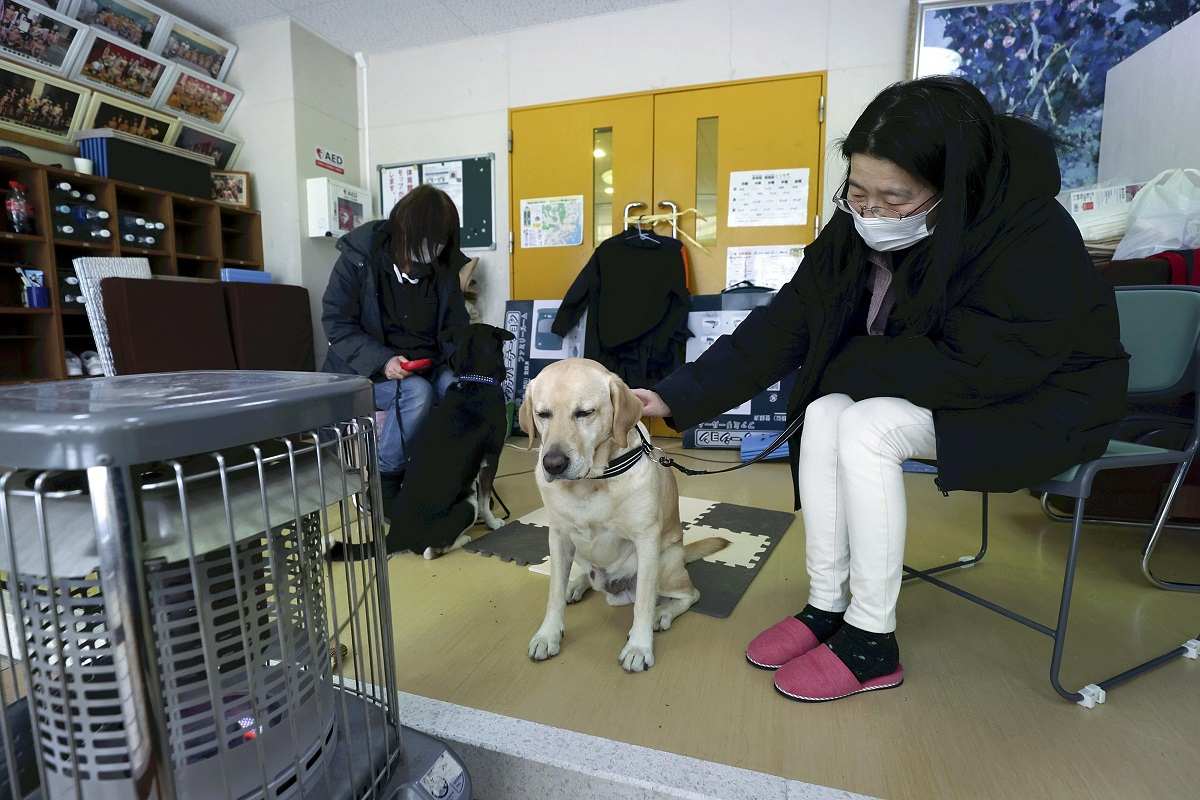
Evacuees sit on Tuesday with their dogs at the entrance of the gymnasium of Iida Elementary School, which is being used as an evacuation center in Suzu, Ishikawa Prefecture.
11:56 JST, January 20, 2024
The door of their home doesn’t properly close, and a cold wind sweeps in through the gap. They sleep in the only room in which the ceiling does not leak when it rains.
But Yorihiko Misaki and his wife have been hesitant to move into an evacuation center in the wake of the Noto Peninsula Earthquake for a personal reason — their 12-year-old Pomeranian named Kotaro.
“He might start barking and disturb others,” said the 72-year-old Misaki, whose house in Suzu, Ishikawa Prefecture, was damaged by the New Year’s Day quake.
The number of evacuation centers that allow pets are limited, and many pet owners whose houses were damaged are being forced into a dilemma, often deciding to either remain in their house or take refuge in their cars.
The Environment Ministry has stated that allowing owners to take shelter with their pets is a measure that helps maintain mental health. But not everybody is comfortable with animals, and evacuation centers are being tasked to find ways to meet the needs of all.
Misaki had considered moving to the community evacuation center, but decided against it in consideration of Kotaro’s sensitive nature, which makes the dog uncomfortable in crowded places. The couple stayed for about 10 days in their car before returning home.
“We are afraid of the aftershocks and would like to move to a safe place as soon as possible, but we cannot even think about leaving our dog,” Misaki said.
Some evacuation centers in the city have established their own rules and accept pets. One room on the third floor of Iida Elementary School, where about 160 people have taken refuge, was set aside for people with small dogs and cats. Large dogs stay with their owners at the entrance of the gymnasium, where a kerosine stove keeps them warm. Up to now, neighborhood residents have brought dogs, cats and rabbits.
“I can’t help but feel concerned when living with other evacuees [without pets],” said a 49-year-old woman who evacuated with her Labrador retriever. “I’m thankful to be able to stay in a separate place.”
She remains hesitant about making a secondary evacuation to a hotel or inn out of the region. “If I can’t live with my pet there, I have no choice but to stay here even if there are small inconveniences.”
Peace Winds Japan, a Hiroshima Prefecture-based nonprofit organization that provides health care and support for pets in disaster areas, arrived in a quake-hit area on Jan. 9.
Regarding the limited number of evacuation centers that allow pets, Peace Winds’ Rui Kishishita, 41, said, “The comfort of taking refuge with their pets will help owners to keep up their health. It is essential to give consideration to pet owners when encouraging secondary evacuations.”
Guidelines on staying with pets
The issue of how to deal with pets during evacuations has come up in past disasters, as evacuation centers also shelter people who may be uncomfortable or allergic to animals.
After the Great East Japan Earthquake in 2011, there were cases where pet owners were hesitant to evacuate or were forced to stay in their cars because they could not bring their pets with them.
Following the nuclear power plant accident, orders to evacuate homes caused many pets to be left abandoned, and dogs separated from their owners turned into strays.
Based on that experience, the Environment Ministry established guidelines in 2013 stipulating a basic policy of “bringing pets on evacuations.”
The guidelines recommend that separate living spaces be maintained for people and pets. This can be done by marking off a corner of a shelter for animals in a corner, or using a car or tent on the shelter’s premises.
It also urges owners to stockpile five days’ worth of pet food and water, and train the pets not to disturb others.
"Society" POPULAR ARTICLE
-

M4.9 Earthquake Hits Tokyo, Neighboring Prefectures
-

Israeli Tourists Refused Accommodation at Hotel in Japan’s Nagano Pref., Prompting Protest by Israeli Embassy and Probe by Prefecture
-

M7.5 Earthquake Hits Northern Japan; Tsunami Waves Observed in Hokkaido, Aomori and Iwate Prefectures
-

Tsukiji Market Urges Tourists to Avoid Visiting in Year-End
-
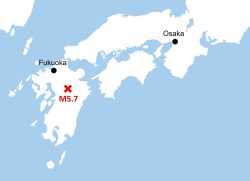
M5.7 Earthquake Hits Japan’s Kumamoto Pref., Measuring Upper 5 Intensity, No Tsunami Expected
JN ACCESS RANKING
-

Keidanren Chairman Yoshinobu Tsutsui Visits Kashiwazaki-Kariwa Nuclear Power Plant; Inspects New Emergency Safety System
-

Tokyo Economic Security Forum to Hold Inaugural Meeting Amid Tense Global Environment
-

Imports of Rare Earths from China Facing Delays, May Be Caused by Deterioration of Japan-China Relations
-

University of Tokyo Professor Discusses Japanese Economic Security in Interview Ahead of Forum
-

Japan Pulls out of Vietnam Nuclear Project, Complicating Hanoi’s Power Plans
